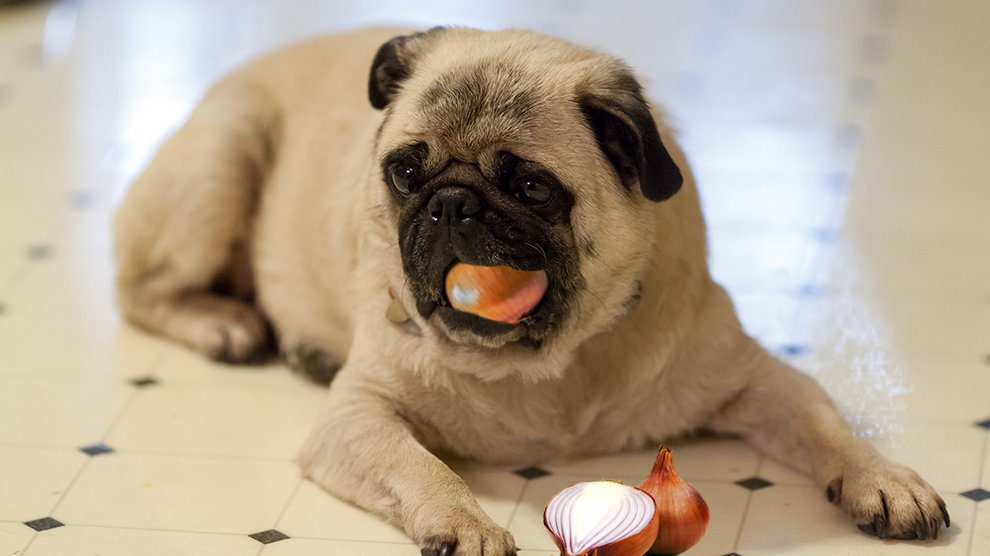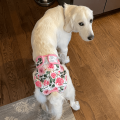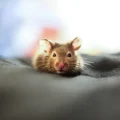Onions are a common ingredient in many human foods, but they can be dangerous for dogs. Allium species toxicosis, or onion toxicity, can occur when dogs consume onions, garlic, or other members of the allium family.
The American Kennel Club warns that even small amounts of onion can be deadly to a small dog. In fact, 100g of onion per 20kg of a dog’s weight can lead to toxic effects. This means that it doesn’t take a lot of onion to cause harm to your furry friend.
If your pet has consumed onions or garlic, it’s important to watch for signs of toxicity, which may take several days to manifest. If your dog’s urine is red or brown, they are weak, panting, or breathing faster than usual, it’s time to bring them to the vet immediately.
Once at the vet, your dog may need oxygen supplementation, a blood transfusion, and IV fluid support to get them through this potentially deadly situation. It’s important to remember that some of these symptoms can take up to a week to develop.
So, how much onion is too much? The toxic dose of onion in dogs is about 0.5 grams per kilogram of body weight. For a 10-pound dog, that would be about 20 grams of onion. To put that in perspective, thre are about 5 grams in each teaspoon, so Marlin would have to eat over 4 teaspoons of onions to be at risk of toxicity.
It’s also worth noting that cooked onions are just as dangerous as raw onions, so it’s important to keep all forms of onion away from your furry friend. Additionally, other members of the allium family, such as garlic and shallots, can also cause toxicity.
Onions and other members of the allium family can be toxic to dogs. It’s important to keep these foods away from your furry friend and watch for signs of toxicity if they do consume them. If you suspect your dog has consumed onions, garlic, or shallots, bring them to the vet immediately for treatment.
The Toxicity of Onions for Dogs
Onions are known to be toxic to dogs, and it is important for dog owners to be aware of how much onion can be harmful to their pets. According to The American Kennel Club, a dog can experience toxic effects from consuming 100g of onion per 20kg of their weight. This means that even a small amount of onion can be deadly to a small dog.
To put this into perspective, if a dog weighs 10kg, they would only need to consume 50g of onion to experience toxic effects. This is equivalent to approximately half of a medium-sized onion. A larger dog weighing 30kg would need to consume around 150g of onion to experience toxic effects.
It is important to note that all forms of onion, including cooked, raw, powdered, and dehydrated, can be harmful to dogs. The toxic component of onion is N-propyl disulfide, which can cause oxidative damage to a dog’s red blood cells and lead to anemia.
Common symptoms of onion toxicity in dogs include vomiting, diarrhea, loss of appetite, lethargy, and pale gums. If you suspect that your dog has consumed onion, it is important to seek veterinary attention immediately. Treatment may involve inducing vomiting, administering activated charcoal, and providing supportive care such as intravenous fluids and blood transfusions.
Even a small amount of onion can be toxic to dogs. It is important for dog owners to be vigilant and keep onions and all onion-containing foods out of reach of their pets.

The Impact of Eating a Small Piece of Onion on Dogs
Even a small piece of onion can hurt a dog. Onions, along with garlic, chives, and leeks, are part of the allium family and contain a compound called thiosulphate. This compound can cause damage to a dog’s red blood cells, leading to a condition called hemolytic anemia.
The amount of onion that can cause harm to a dog depends on the dog’s size and the amount of onion ingested. However, as little as 5 grams of onion per kilogram of body weight can cause toxicity. For example, a 10-pound dog wold only need to eat about half an ounce of onion to experience symptoms of toxicity.
Symptoms of onion toxicity may not appear for several days after ingestion and can include vomiting, diarrhea, lethargy, abdominal pain, and a rapid heart rate. In severe cases, a dog may experience difficulty breathing, collapse, and even death.
If you suspect that your dog has ingested any amount of onion, it’s important to contact your veterinarian immediately. Treatment may include inducing vomiting, administering activated charcoal, and providing supportive care such as intravenous fluids and oxygen therapy.
To prevent onion toxicity, it’s best to keep all onions and related vegetables out of your dog’s reach. This includes cooked and raw onions, as well as onion powder and other products that contain onion as an ingredient.
The Dangers of Dogs Eating Onions
Onions and garlic belong to the Allium family, which can be toxic to dogs if ingested in large quantities. These foods contain a substance called thiosulphate, which can damage a dog’s red blood cells and lead to a condition called hemolytic anemia.
If your dog has eaten onions or garlic, the symptoms may not appear immediately. It can take a few days for the symptoms to develop. The most common symptoms of onion toxicity in dogs are:
– Red or brown urine
– Weakness
– Panting
– Breathing faster than usual
– Loss of appetite
– Vomiting
– Diarrhea
If you notice any of thse symptoms in your dog, you should take them to the vet immediately. Your vet may need to perform a blood test to check your dog’s red blood cell count. If your dog is diagnosed with onion toxicity, they may need oxygen supplementation, a blood transfusion, and IV fluid support to get them through this.
Prevention is always the best course of action. Avoid giving your dog any food that contains onions or garlic. This includes human food like pizza, pasta sauce, and Chinese food. If you suspect your dog has eaten onions or garlic, call your vet right away. Early intervention can be the difference between life and death for your furry friend.
Toxicity of Onions for 10 Pound Dogs
Onion can be a harmful substance for dogs if consumed in large quantities. The dose of onion that is toxic to a 10-pound dog is about 20 grams. This means that if a 10-pound dog eats more than 20 grams of onion, it coud potentially lead to toxicity.
To put this into perspective, there are approximately 5 grams of onion in each teaspoon. Therefore, a dog would need to eat more than 4 teaspoons of onion to reach the toxic threshold. It is important to note that the amount of onion that can cause toxicity may vary based on the size and health of the dog.
Symptoms of onion toxicity in dogs may include vomiting, diarrhea, lethargy, and difficulty breathing. If you suspect that your dog has consumed a toxic amount of onion, it is important to seek veterinary care immediately.
In order to prevent onion toxicity in dogs, it is recommended to avoid feeding dogs foods that contain onion or onion powder. It is also important to keep onions and other harmful foods out of reach of pets.
Conclusion
Dogs are wonderful companions and bring so much joy and love to our lives. However, it is important to remember that they are also vulnerable to certain foods and substances that can be toxic to them. As pet owners, it is our responsibility to educate ourselves on what is safe and what is not for our furry friends. We should always be mindful of what we are feeding them and keep potentially harmful foods out of their reach. Additionally, if we suspect that our pet has consumed something toxic, we should seek veterinary care immediately. By taking these precautions, we can help ensure our dogs live long and healthy lives as cherished members of our families.












